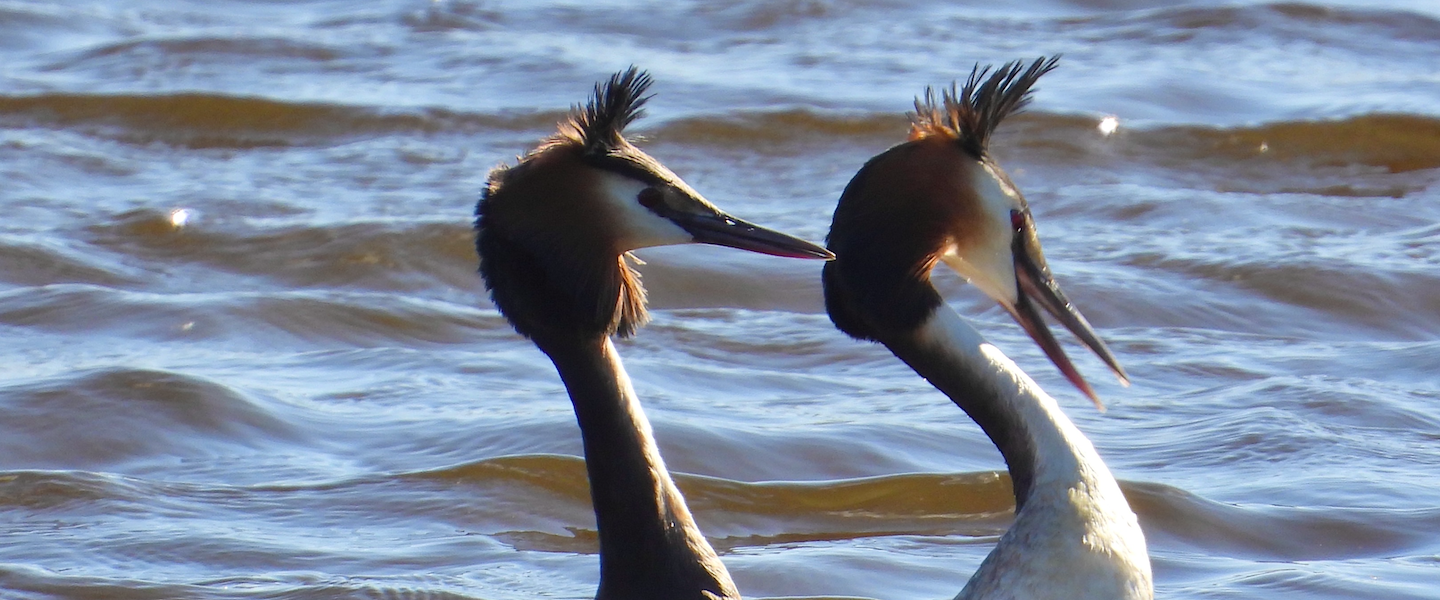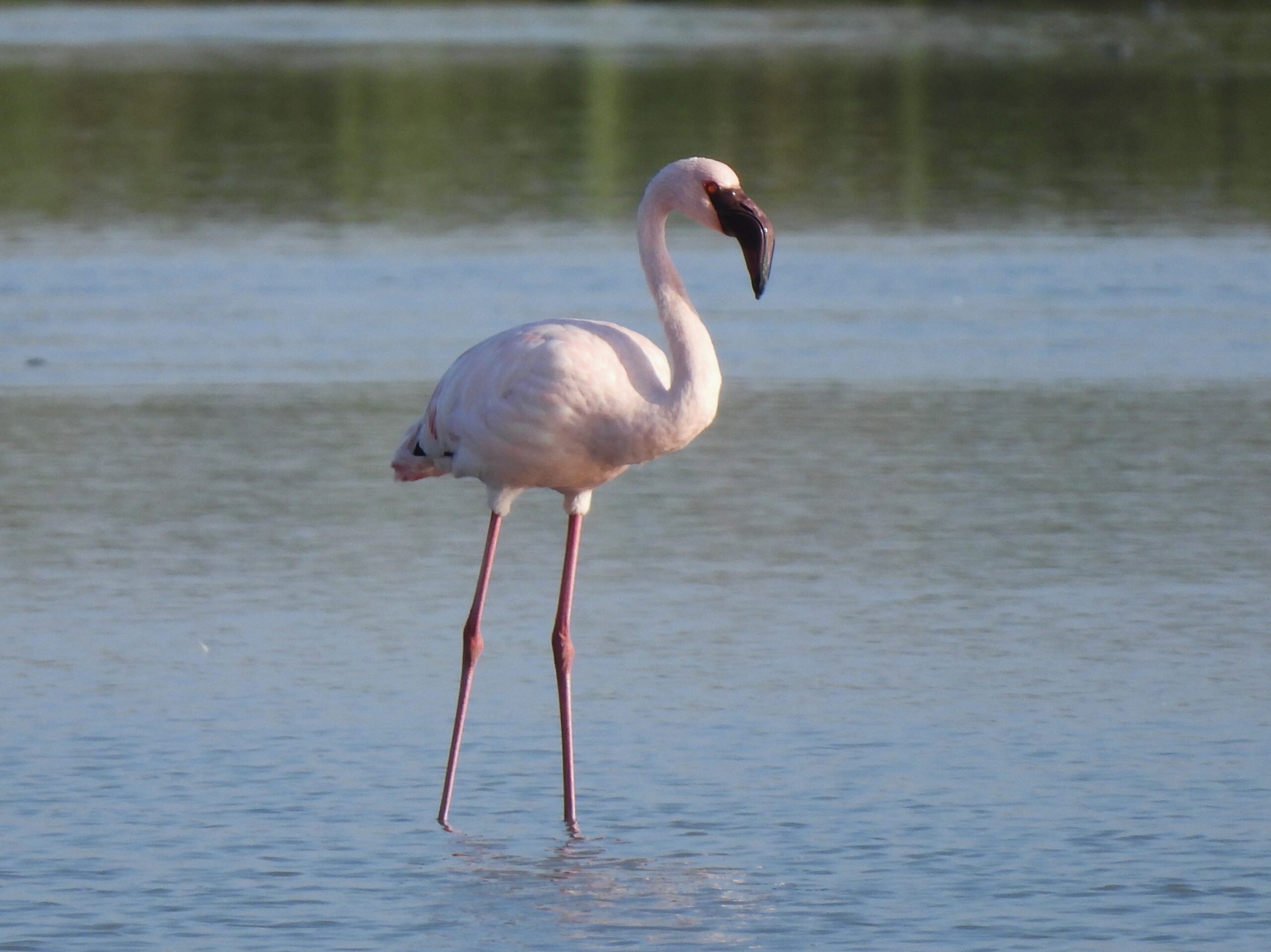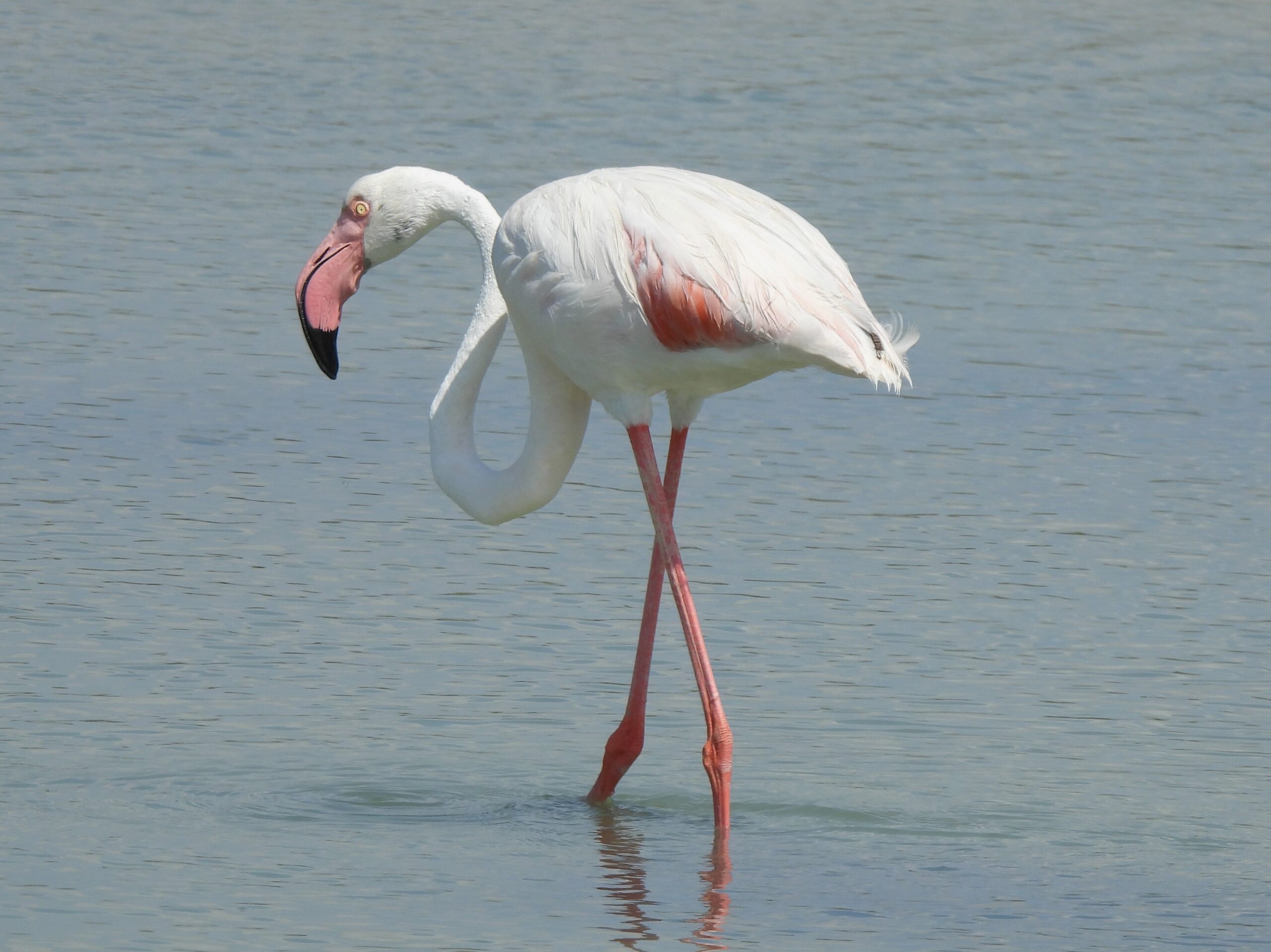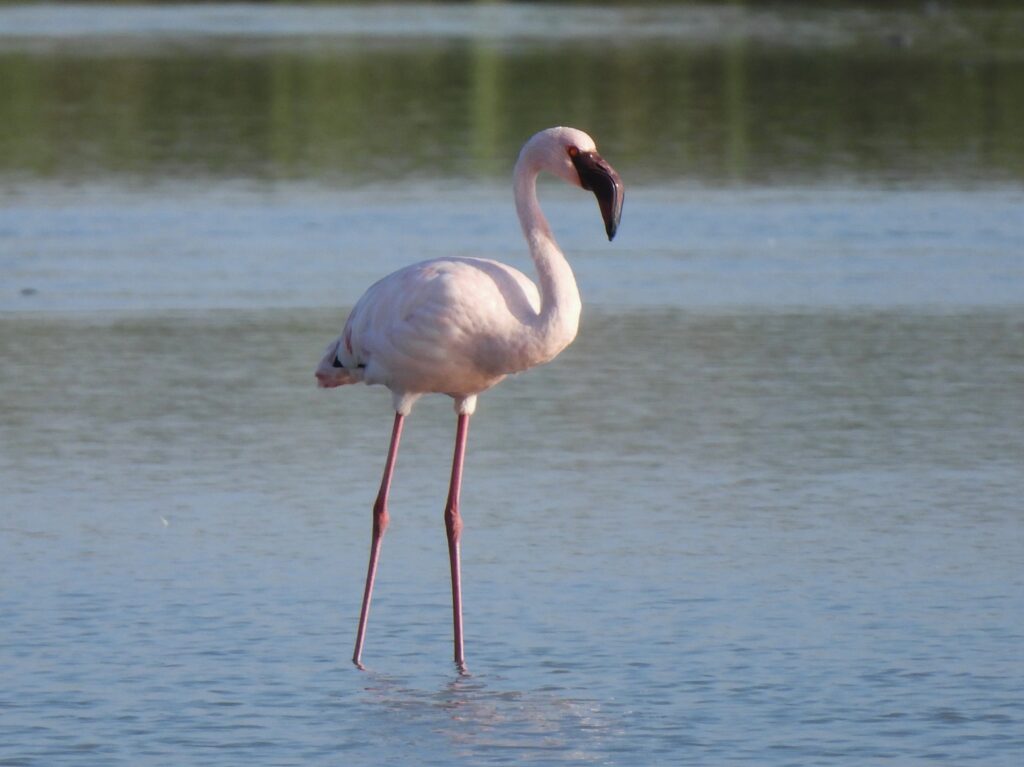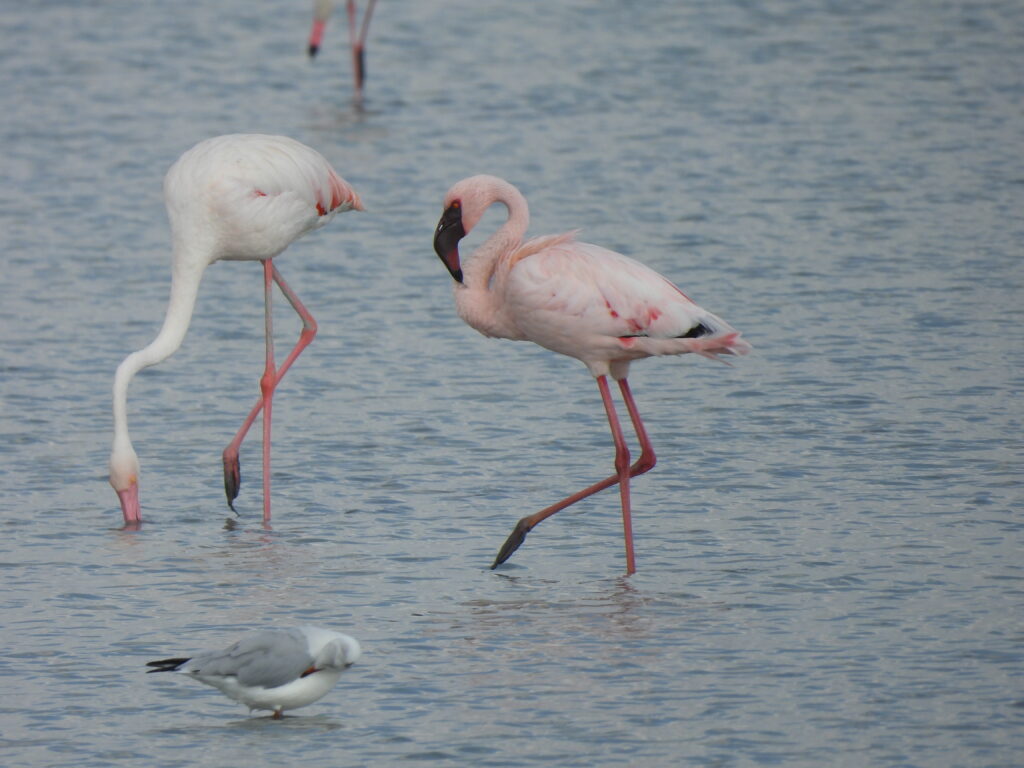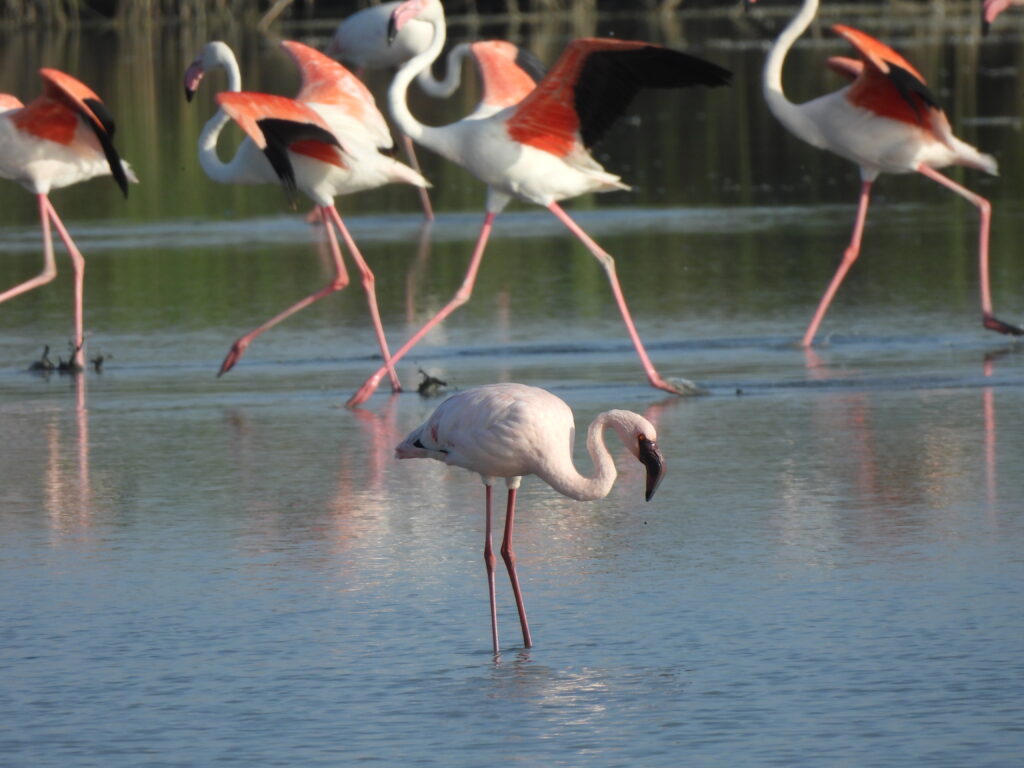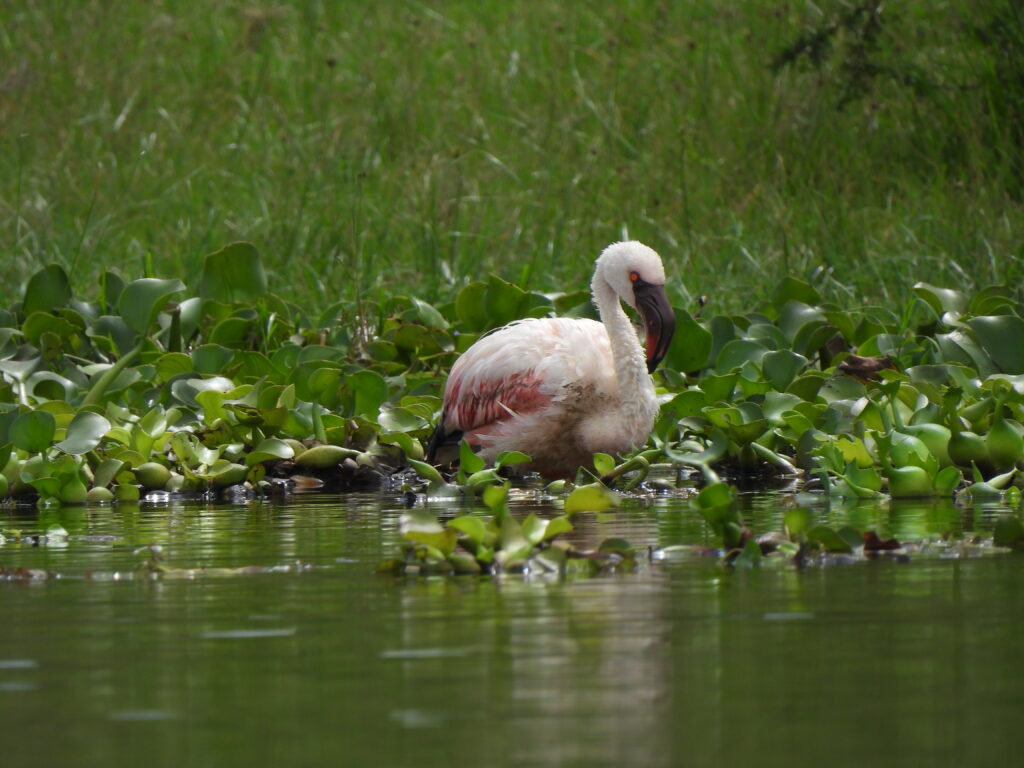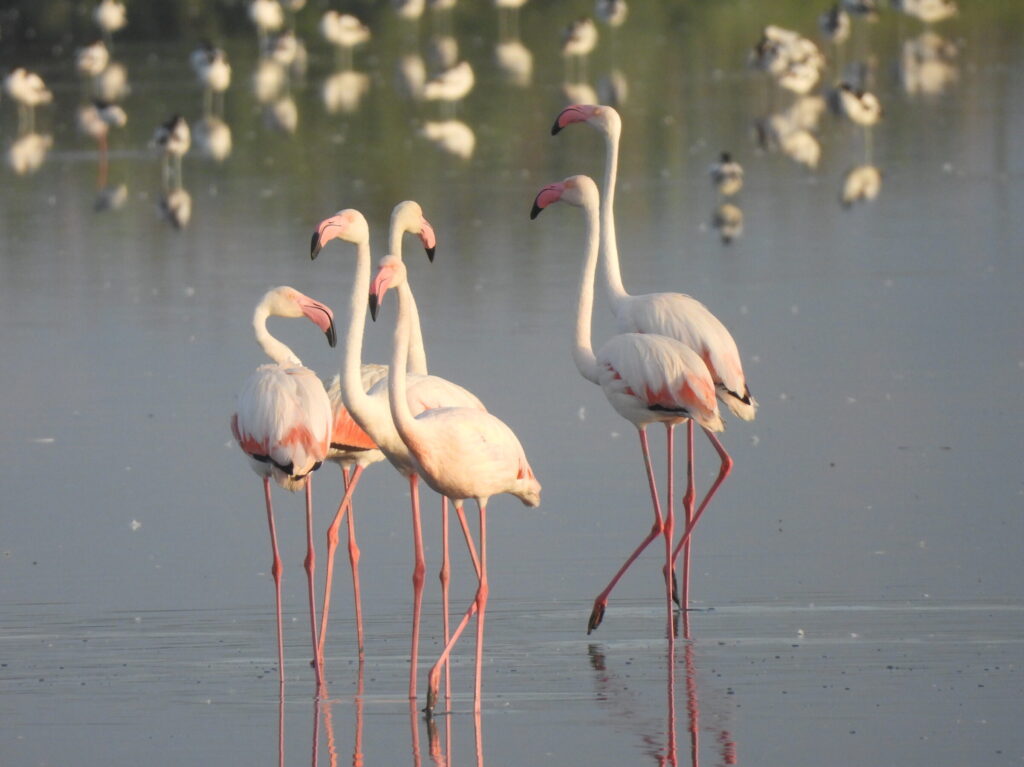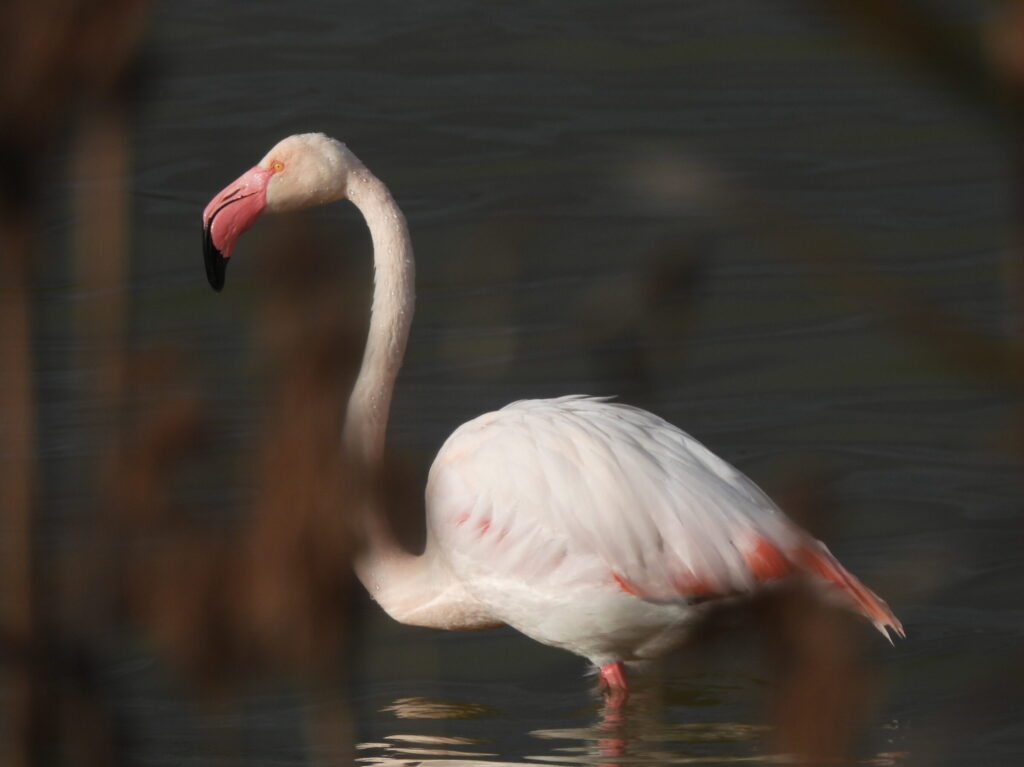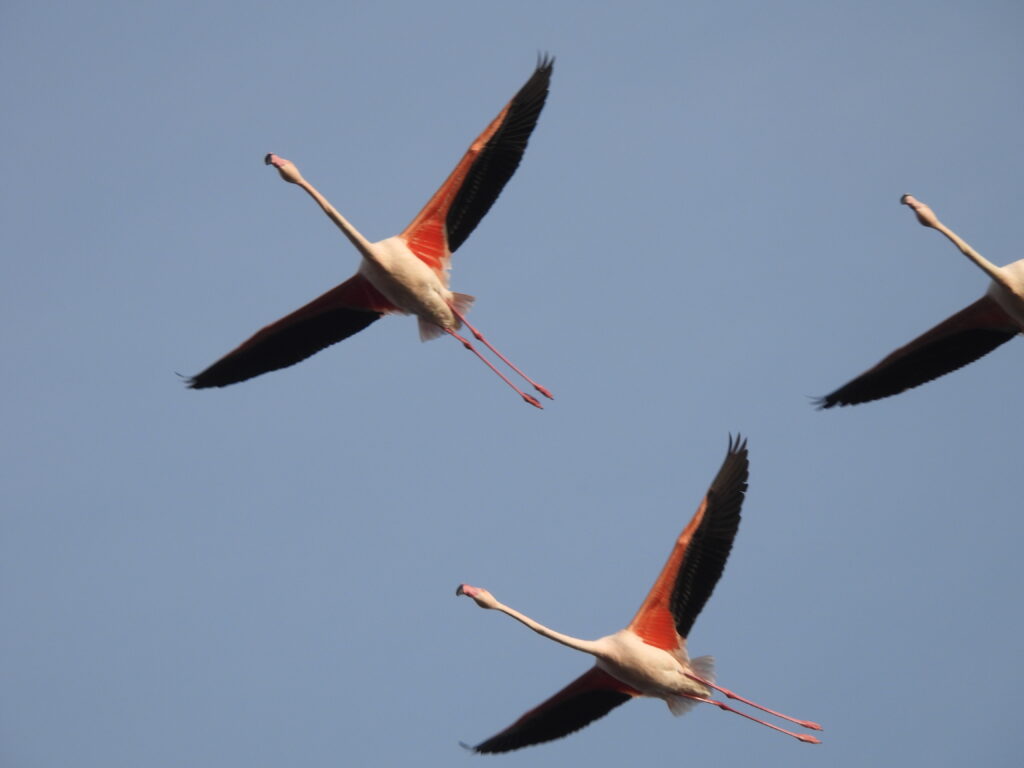The flamingos (family Phoenicopteridae) are a family of birds belonging to the monotypic order Phoenicopteriformes. These wading birds have specialized upside down bills adapted to filtering water mainly for brine shrimp and other plankton on mud. Their food is rich in carotenes, giving them a characteristic pink plumage. They forage in large flocks known as flamboyances, performing synchronized ritualized courtship displays and and breeding colonially in mud nests, feeding the chicks crop milk.
The family comprises 8 species in 4 genera. Genus Phoeniconaias (1 species) is found in the Old World. Genus Phoenicoparrus (2 species) is endemic to highland Andean lagoons. Genus Phoenicopterus (3 species) includes two Neotropical species and one found in Africa, the Mediterranean basin and the Indian Subcontinent.
Lesser flamingo
Phoeniconaias minor
Smallest flamingo species, found in alkaline shallow waters of Subsaharan Africa and locally in India. The global population breeds only at a handful of locations, but individuals wander throughout the continent, even reaching Europe. Besides birds seen in Lake Naivasha, Kenya, I have seen some of such wandering flamingos in El Hondo, Alicante.
Greater flamingo
Phoenicopterus roseus
Well spread in saltpans and other saline shallow wetlands of the Mediterranean Basin and Africa to Central Asia, being the only member of the family regularly found in Europe. Long-lived and seasonally monogamous. This elegant bird is one of the most numerous species in the wetlands of south Alicante, where flamboyances forage all year round. I have also seen the species elsewhere in Greece and the Persian Gulf.



